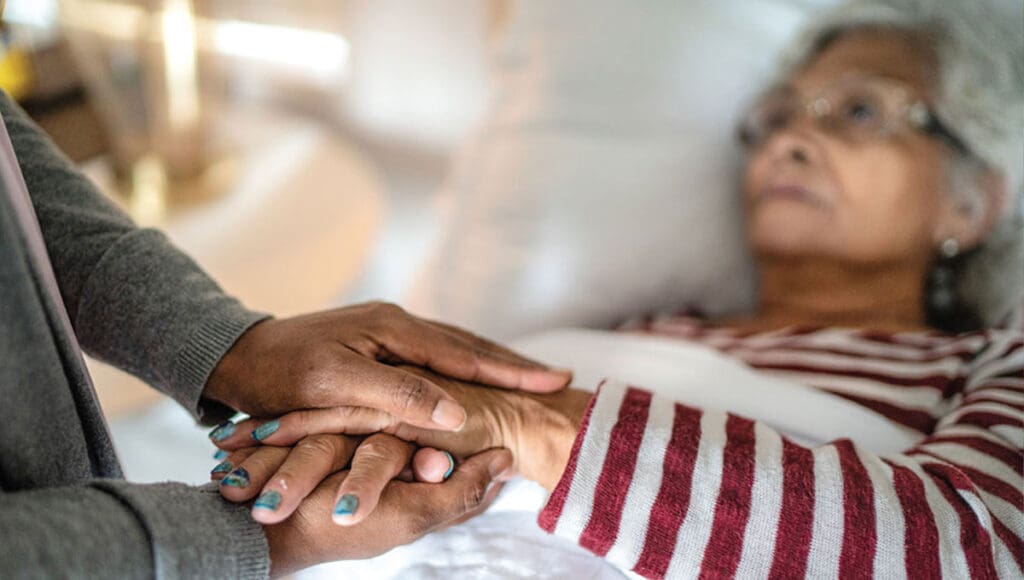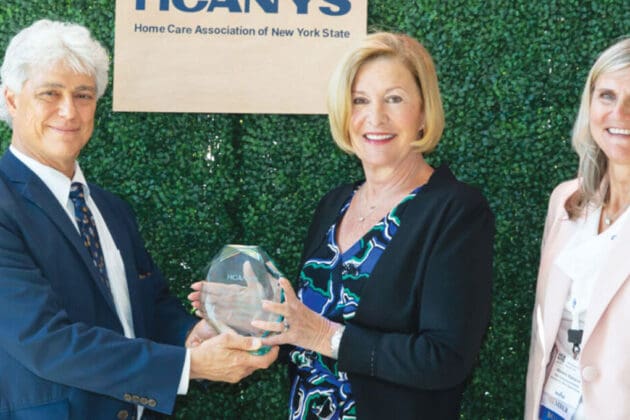
VNS Health Hospice has taken a number of steps recently to enhance the quality of care for their hospice patients with advanced illness. As a result, the hospice program has seen significant improvements in two important quality measures: non-death discharges—meaning that a patient has left hospice care without having passed away—and end-of-life clinician visits, which are visits provided by a registered nurse or social worker in the last few days of life.
There are a number of different causes for non-death discharges, but the most common reason is that the patient has been hospitalized, usually because a concerned family member dialed 911. When this occurs, the patient may end up being admitted to the hospital, which is problematic in two ways: The patient may have an unwanted hospital stay that is counter to their end-of-life goals of care; and as a result of the admission, they’re likely to become disenrolled from hospice.
This is a particular problem for the New York City population served by VNS Health Hospice. “These days, more and more patients are being referred to us in their very last days of life, which means their family is suddenly faced with managing complex symptoms and other challenges they may not be prepared for,” explains Dr. Ritchell Dignam, Chief Medical Officer, VNS Health Provider Services.
To help address this, the organization is implementing a combination of approaches to ensure that families of complex hospice patients have ready access to intensive symptom management support for their loved one, starting at the time of admission.
These approaches include:
- Employing an analytic tool, developed in-house, that evaluates each new hospice patient’s risk of hospitalization. The highest-risk patients receive visits earlier and more often from the hospice care team.
- Revamping protocols for Hospice’s contact center agents. Hotline calls from family members related to symptom management are now immediately routed to a nurse, who advises the family on how to manage the patient’s symptoms and, when needed, engages the hospice physician or nurse practitioner.
- Since last year, the hospice team has also been using a “mortality dashboard” developed by the Business Intelligence and Analytics team, that automatically monitors electronic medical records and sends a notification when a patient appears to be entering their last days of life—alerting clinicians, who then increase the frequency of their visits.
Thanks to these efforts, VNS Health Hospice’s rate of non-death discharges has dropped 25% in the past year, to just over one in six patients. These initiatives have also contributed to a near-doubling, from 33% to 61%, in the percentage of patients receiving at least two home visits from a VNS Health Hospice clinician in their last three days of life—another key quality metric.
“Our improved performance on these quality measures translates into substantially better quality of care and consumer experience for hospice patients and their families,” notes Sherl Brand, RN, BSN, SVP, Hospice Care. “It’s a clear indication that family members are getting both the clinical support and the training they need to navigate their loved one’s last days of life with confidence and peace of mind.”


